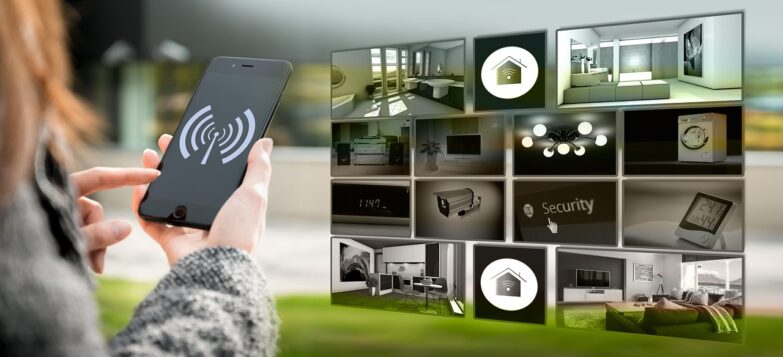“Unlock the potential of freedom with ‘Achieving Independence: Accessible home modifications for People with Disabilities,’ a comprehensive guide that explores smart changes you can make to your home to ensure a safer, more accessible environment tailored to your unique needs. From Handicap Ramps to Accessible Bedrooms and innovative Stairlifts, this in-depth insight encapsulates various facets tailored to enhance the daily living of aging individuals and people with disabilities. With our broad-ranging expertise, we provide tangible solutions to transform every corner of your abode, creating an empowering space conducive to independent living.”
Understanding Accessible Home Modification
Defining accessible home modifications
Accessible home modifications are changes made to a person’s home to accommodate their unique physical needs. These changes aim to make the house safer and better suited for individuals living there, especially for the elderly and people with disabilities. This can involve different components, including handicap ramps, door and hallway widening, setting up accessible bathrooms and bedrooms, automatic door openers, low-pile carpet and smooth flooring, stairlifts, porch lifts, accessible lighting, and properly designed emergency exits.
Importance of accessible home modifications
There’s enormous importance in accessible home modifications. They provide a safer and more comfortable living environment catered to an individual’s specific needs. In so doing, these modifications encourage and promote independence and confidence in mobility, reducing the risk of accidents and injuries within the house.
Understanding the ADA and housing
The American with Disabilities Act (ADA) plays a significant role in improving housing accessibility. ADA guidelines provide standards to assist in designing accessible homes for people with disabilities. Understanding ADA when considering home modifications ensures an environment that is both legally compliant and thoughtfully designed for adapted living.
Assessing Individual Needs for Home Modifications
The role of a needs assessment
A needs assessment helps determine which features can enhance a home’s livability through specific adaptations or assistive technologies. It is an essential step in adapting a home to suit particular needs, outlining the alteration requirements to improve function and safety.
Steps in conducting a needs assessment
Conducting a needs assessment involves several steps. The process begins by thoroughly evaluating the individual’s requirements – by considering their physical needs, lifestyle, and the aspects with which they struggle in their current living environment. It then requires a home assessment to identify where modifications are needed, from determining accessibility issues like difficulty in entering or moving around the house to specific areas like the bathroom that require adaptation.
Consulting professionals for a needs assessment
While you can perform a basic needs assessment, a professional’s input and experience can prove invaluable in identifying less noticeable factors. Professionals are trained to assess all aspects of home accessibility and point out areas you might have missed.

Access Modification Feasibility Assessment
Determining applicable modifications
After obtaining the results from the needs assessment, a feasibility study will illuminate which modifications are most suitable for the home environment. This study considers zoning, code condition, strategize maintenance, and other derivable design and installation issues.
Gathering cost estimates
Once you determine the necessary modifications, the next step is to gather cost estimates. This part involves researching and pricing the products and services required for the modifications.
Evaluating effect on home’s resale value
While the primary purpose of home modifications is to cater to your needs, it’s essential to consider how these changes might affect your property’s resale value. Investigate the local real estate market and gain insights on how modifications might impact future property value.
Accessible Modifications in High-traffic Areas
Modifying kitchens for accessibility
Adaptations in the kitchen can greatly improve one’s daily routine. Changes may include installing roll-under sinks, placing appliances at a lower height, ensuring easy access to storage, and having wider and clutter-free pathways.
Improving bathroom accessibility
Modifying a bathroom can make a significant difference in an individual’s life. The inclusion of features like walk-in tubs with bath seats, handheld shower controls, wall-mounted sinks, and non-slip surfaces can vastly improve the usability and safety of a bathroom.
Enhancing bedroom accessibility
Bedroom modifications enhance safety and ease of movement. Features like bedside controls, direct bathroom access, wheelchair-convenient storage, and reinforced ceilings for lifting equipment all contribute to a more accessible bedroom.
Making living areas more accessible
Modifications done to general living areas could mean the widening of hallways, doors, or installing ramps for smooth movement around the house. Installing appropriate lighting and floor surfaces also make these areas safer and more accessible.

Safe and Secure Entryways and Exits
Importance of accessible entryways and exits
An accessible entryway is an essential mobility component. A properly designed entryway provides easy access in and out of the home, mitigating risks of injuries and falls.
Modifying doors and doorways for better accessibility
The doorway modification process entails widening doors to accommodate wheelchairs or installing automatic door openers. This allows for smoother movement in and out of rooms and entrance points.
Emergency exit planning
Planning for emergency exits is a critical aspect of accessible home modifications. Creating a clear and accessible emergency exit plan helps ensure safety during emergencies.
Product Guide for Home Modifications
Guide to various assistive technologies for home
Numerous assistive technologies can improve home accessibility, such as sensor lighting, intercoms, and easy-to-use devices like taps, door handles, and appliances.
Wheelchair ramps and lifts
Installing ramps and lifts can greatly increase the mobility of individuals using wheelchairs or walkers. These features aid movement between different spaces, making steps and uneven surfaces easier to navigate.
Smart home technologies and accessibility
Smart home technologies, such as voice-activated lighting, heating, or locking systems, can significantly contribute to an accessible home, making daily tasks for people with various disabilities more manageable.

Financial Assistance for Home Modifications
Overview of financing options
It is vital to be aware of the financing options available for home modifications. These may include personal savings, disability grants, home-equity loans, and insurance.
Government-funded programs and eligibility
Also, certain government-funded programs provide financial assistance for accessible home modifications. They do so based on specific criteria to determine the eligibility of applicants.
Low-interest loans for home modifications
In some cases, low-interest loans are available for qualifying individuals needing home modifications. Such loans can cover the costs of necessary changes that will increase home accessibility and safety.
Working with Home Modification Professionals
Finding and choosing a home modification service
Picking a competent and experienced home modification service is important. Look for licensed contractors with experience in accessible adaptations, and check out reviews or reach out to past clients for feedback.
Understanding the home modification process
Before starting any project, it is crucial to understand the home modification process, including planning, designing, construction and testing, among others.
Working effectively with professionals
To ensure a seamless and efficient modification process, maintain open communication with your contractors. Clearly express your needs, ask questions, and provide feedback throughout the procedure.
Maintaining and Upgrading Home Modifications
Tips for maintaining home modifications
Regular maintenance is essential to keep modifications in good working condition. Perform timely checks and schedule repairs when necessary to prolong their lifespan.
When to consider upgrading home modifications
As needs change over time, it may be necessary to upgrade modifications. Regular evaluations can help decide when it’s time for an upgrade.
Managing ongoing costs of home modifications
Remember to plan for ongoing costs such as maintenance, repairs, and potential upgrades. This helps prevent unexpected future expenses and ensure your home remains accessible and safe.
Advocating for Accessible Housing
Legal rights and protections for people with disabilities
Understanding your legal rights is essential. Various laws protect the rights of those with disabilities and mandate accessible housing.
Supporting community and policy efforts for accessible housing
Participating in community and policy efforts advocating for accessible housing can help amplify a significant issue and bring about wider change.
Resources for advocacy and support
Several resources offer advocacy and support for accessible housing. Whether online communities or research hubs, these resources can aid in finding pertinent information and creating substantial dialogues.
